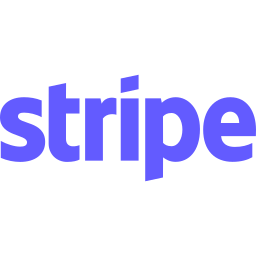The Video Revolution in Corporate Training
Let’s face it – traditional corporate training methods just aren’t cutting it anymore. PowerPoint presentations and lengthy PDFs are quickly becoming relics of the past as companies discover the power of AI-driven video content. The shift is happening fast, and for good reason.
I recently worked with a team that was spending weeks creating training videos – scripting, filming, editing, and distributing them across multiple regions. When they switched to an AI video platform, their production time dropped from weeks to mere hours. The results spoke for themselves: better engagement, improved knowledge retention, and massive cost savings.
This transformation isn’t just a fluke – it’s part of a broader trend that’s reshaping how enterprises approach training and communication.
The Rise of AI Video Creation Platforms
AI video tools have evolved dramatically in recent years. What started as basic text-to-speech applications has grown into sophisticated platforms that can transform documents, links, or simple text into compelling video content.
Take vidBoard.ai, for example. This platform positions itself as more than just another video creation tool – it’s a comprehensive solution that streamlines the entire video production process, making it accessible to anyone regardless of technical expertise.
How These Tools Work
Modern AI video platforms typically follow a structured approach that makes video creation straightforward:
- Define – Select from templates and customize layouts
- Design – Add text, images, and media with AI assistance
- Craft – Customize with multimedia assets and voiceovers
- Combine – Preview and make final adjustments
- Showcase – Export in high quality and share across platforms
This systematic workflow means that even team members with zero video editing experience can create professional-quality training videos in just a few clicks.
Why Enterprises Are Making the Switch
Time and Resource Efficiency
The most immediate benefit of AI video tools is the dramatic reduction in production time. One user mentioned on AppSumo that they “no longer need to spend hours making simple videos.”
In the enterprise context, this efficiency translates to:
- Faster deployment of critical training materials
- Less strain on creative and L&D teams
- The ability to update content quickly as information changes
- More time for strategizing rather than producing
Cost Reduction
The financial case for AI video tools is compelling:
- Elimination of expensive video equipment
- Reduced need for specialized video production staff
- Lower costs for translation and localization
- No studio rental fees or travel expenses for filming
A small team with one AI video platform subscription can now produce what previously required an entire video production department. For enterprises looking to optimize budgets while maintaining quality, this value proposition is hard to ignore.
Consistency Across Global Teams
For multinational companies, maintaining consistent training standards across regions has always been challenging. AI video tools are changing this equation by offering:
- Identical core content that can be easily localized
- Consistent branding and messaging
- Standardized quality regardless of regional resources
- Centralized content management with distributed delivery
Leaders in platforms like vidBoard.ai offer multilingual capabilities with AI voices that can lip-sync in over 125 languages, enabling truly global training solutions.
Key Features Driving Enterprise Adoption
AI Avatars and Presenters
One of the most appealing aspects of modern AI video tools is the availability of lifelike digital presenters. Many platforms now offer over 100 customizable AI avatars that perform with remarkably human-like gestures and expressions.
These avatars solve several problems for enterprise training:
- Eliminate the need for on-camera talent
- Ensure consistent presentation quality
- Allow for easy updates without re-filming
- Provide diversity options to reflect global workforces
- Create anonymity when needed for sensitive content
According to user reviews, these avatars are becoming increasingly realistic, with one user noting: “The quality and realism of the AI avatars, particularly their lip-syncing capabilities, has received positive feedback.”
Document-to-Video Conversion
Perhaps the most revolutionary feature for training departments is the ability to transform existing documents directly into engaging videos. Rather than starting from scratch, teams can convert:
- Training manuals
- Standard operating procedures
- Compliance documents
- Onboarding materials
- Technical specifications
This capability allows enterprises to unlock the value of existing content while upgrading the delivery format to something far more engaging for today’s learners.
AI Script Generation and Voice Technology
Creating compelling scripts has traditionally been a bottleneck in video production. Modern AI tools now offer automatic script generation capabilities that can draft initial content based on simple prompts or document analysis.
The voice technology has also advanced significantly, with platforms integrating voice services from industry leaders like ElevenLabs, OpenAI, and Microsoft Azure. These voices offer natural intonation and can be customized to match brand personalities.
Real-World Enterprise Applications
Employee Onboarding and Training
New employee onboarding is one area where AI video tools are making a significant impact. Companies are creating personalized welcome videos, role-specific training modules, and interactive company culture introductions – all without massive production budgets.
The benefits are substantial:
- Consistent onboarding experience regardless of location
- Easy updating as policies change
- Ability to scale training for seasonal hiring surges
- Reduced burden on HR and training staff
Compliance and Policy Training
Compliance training has traditionally been one of the least engaging parts of corporate education. AI video tools are changing this by transforming dry policy documents into watchable content with:
- Scenario-based examples
- Visual explanations of complex regulations
- Relatable avatar presenters instead of text-heavy slides
- Quiz elements to ensure comprehension
When compliance training becomes more engaging, completion rates increase and actual knowledge retention improves – a win-win for both employees and risk management teams.
Product Knowledge and Sales Training
For companies with complex products or frequent updates, keeping sales teams educated is an ongoing challenge. AI video platforms enable:
- Quick creation of product update videos
- Consistent messaging about features and benefits
- Readily available training that salespeople can review on-demand
- Easily localized content for global sales forces
Choosing the Right AI Video Platform for Enterprise Training
With numerous options available, selecting the right platform requires careful consideration of specific enterprise needs. Here’s a comparison of key factors to evaluate:
| Feature | Why It Matters for Enterprise | What to Look For |
|---|---|---|
| Integration capabilities | Must work with existing LMS and communication tools | API access, LMS compatibility, SSO options |
| Customization | Brand consistency is crucial | Custom avatar creation, branded templates, company colors |
| Security | Enterprise data requires protection | Data encryption, access controls, compliance certifications |
| Scalability | Must handle volume as adoption grows | Enterprise licensing, bulk creation tools, team collaboration features |
| Analytics | Measuring training effectiveness | Viewership stats, completion rates, engagement metrics |
Implementation Strategies for Enterprise Success
Successfully integrating AI video tools into enterprise training requires more than just purchasing licenses. Based on client experiences, here are proven strategies for successful implementation:
Start With a Pilot Program
Begin with a specific department or training need rather than a company-wide rollout. This allows you to:
- Demonstrate ROI on a smaller scale
- Refine workflows before broader implementation
- Build internal case studies
- Identify champions who can help drive adoption
Develop Clear Guidelines and Templates
To ensure consistency while empowering teams to create content, develop:
- Brand-aligned video templates
- Voice and tone guidelines
- Avatar selection standards
- Approval workflows for different content types
Provide Proper Training
Even with intuitive tools, proper training ensures better adoption. Consider:
- Live demonstrations of the platform
- Creation of internal how-to videos (using the tool itself)
- Office hours for questions during initial implementation
- Showcasing early success stories to inspire others
Overcoming Common Challenges
Despite the benefits, enterprises may face certain challenges when implementing AI video tools:
Integration With Existing Systems
For seamless adoption, AI video platforms need to work with existing learning management systems. Look for tools with robust API capabilities and established integrations with popular enterprise software.
Content Quality Control
While AI makes creation easier, maintaining quality standards remains important. Establish review processes that balance efficiency with quality assurance.
Change Management
Some trainers and L&D professionals may resist the shift away from traditional methods. Address concerns by:
- Highlighting how AI tools augment rather than replace human expertise
- Demonstrating time savings that allow focus on higher-value activities
- Showing engagement metrics that prove effectiveness
The Future of Enterprise Training Video
Looking ahead, several trends will likely shape the evolution of AI video tools in enterprise training:
Increased Personalization
Future platforms will likely offer even more personalized learning experiences, with content automatically adapted based on role, previous knowledge, and learning style.
Enhanced Interactivity
The next generation of training videos will likely include more interactive elements like:
- Branching scenarios where viewers make decisions
- Embedded assessments that adapt to responses
- Augmented reality components for technical training
Voice Cloning Integration
As noted in user feedback on G2, many users want integrated voice cloning capabilities. This would allow companies to create a consistent brand voice across all training content.
Making the Business Case for AI Video Tools
If you’re considering advocating for AI video tools in your organization, here’s a framework for building a compelling business case:
- Conduct a time-cost analysis of your current video production process
- Calculate the potential time savings based on vendor case studies
- Identify specific training needs where video would improve outcomes
- Consider the scalability benefits across departments and regions
- Request a trial to create a proof-of-concept with your actual content
Many platforms like vidBoard.ai offer free trials that allow users to create a video, providing the perfect opportunity to demonstrate value before committing to a subscription.
Conclusion: The Competitive Advantage of Early Adoption
Enterprises that embrace AI video tools for training aren’t just optimizing costs—they’re gaining a significant competitive advantage in workforce development. With faster content creation, better engagement, and improved knowledge retention, these organizations are building more adaptive, knowledgeable teams.
The question isn’t whether AI will transform enterprise training videos—it’s already happening. The real question is whether your organization will be at the forefront of this transformation or playing catch-up in the years ahead.
Ready to see how AI video tools could transform your enterprise training? Most platforms offer free trials that let you experience the benefits firsthand without a major commitment. Take the first step toward more engaging, efficient, and effective training videos today.





